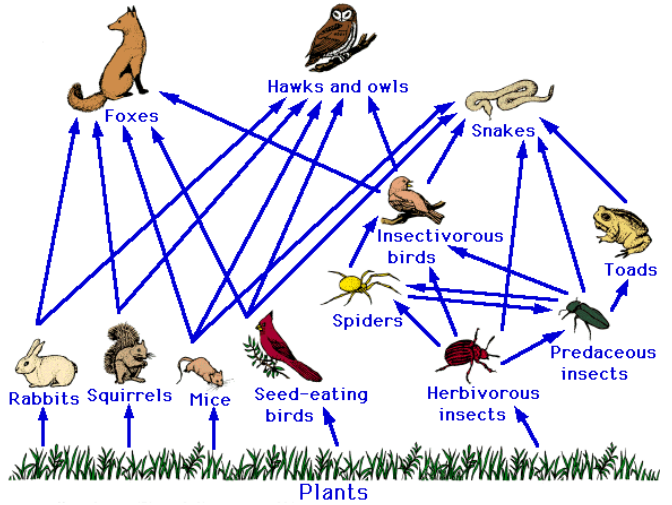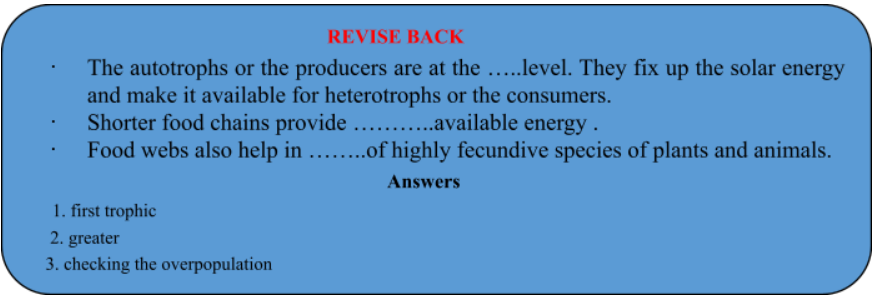
Food Web
Our Environment of Class 10
FOOD WEB
Afood web(orfood cycle) depicts feeding connections (what eats what) in anecological communityand hence is also referred to as aconsumer-resource system. Ecologists can broadly lump all life forms into one of two categories calledtrophic levels: 1) theautotrophs, and 2) theheterotrophs. Tomaintaintheir bodies, grow, develop, and toreproduce, autotrophs produceorganicmatter frominorganicsubstances, including bothmineralsandgasessuch ascarbon dioxide. Thesechemical reactionsrequireenergy, which mainly comes from thesunand largely byphotosynthesis, although a very small amount comes fromhydrothermal ventsandhot springs. A gradient exists between trophic levels running from complete autotrophs that obtain their sole source of carbon from the atmosphere, tomixotrophs(such ascarnivorous plants) that are autotrophic organisms that partially obtain organic matter from sources other than the atmosphere, and completeheterotrophsthat must feed to obtain organic matter. The linkages in a food web illustrate the feeding pathways, such as where heterotrophs obtain organic matter by feeding on autotrophs and other heterotrophs. The food web is a simplified illustration of the various methods of feeding that links an ecosystem into a unified system of exchange. There are different kinds of feeding relations that can be roughly divided intoherbivory,carnivory,scavengingandparasitism. Some of the organic matter eaten by heterotrophs, such assugars, provides energy. Autotrophs and heterotrophs come in all sizes, frommicroscopicto manytonnes- fromcyanobacteriatogiant redwoods, and fromvirusesandbdellovibriotoblue whales.

Food web, consisting of many food chains
CHARACTERISTICS OF A FOOD WEB:
1. Unlike food chains, food webs are never straight. Instead, each food web is formed by interlinking of food chains.
2. A food web provides alternative pathways of food availability. For example, if a particular species of producer is destroyed by a disease in the ecosystem, the herbivores of that area can feed on other species of producers. Similarly, Secondary consumers (e.g., predatory birds) may feed on rats or mice in the event of decrease in population of rabbits in that area on which they also commonly feed.
3. Greater alternatives available in a food web make the ecosystem more stable.
4. Food webs also help in checking the overpopulation of highly fecundive species of plants and animals.
5. Food webs also help in ecosystem development.
DIFFERENCE BETWEEN FOOD CHAIN AND FOOD WEB:
|
Food chain |
Food web |
|
1. Food chain is the straight single path of transfer of food energy in the ecosystem |
1. It consists of a number of inter−connected food chains through which food energy is passed in the ecosystem |
|
2. Members of higher trophic level feed upon a single type of organisms of lower trophic level. |
2. Members of higher trophic level can feed as a number of alternative organisms of the lower trophic level. |
|
3. Presence of food web increases the stability of the ecosystem |





